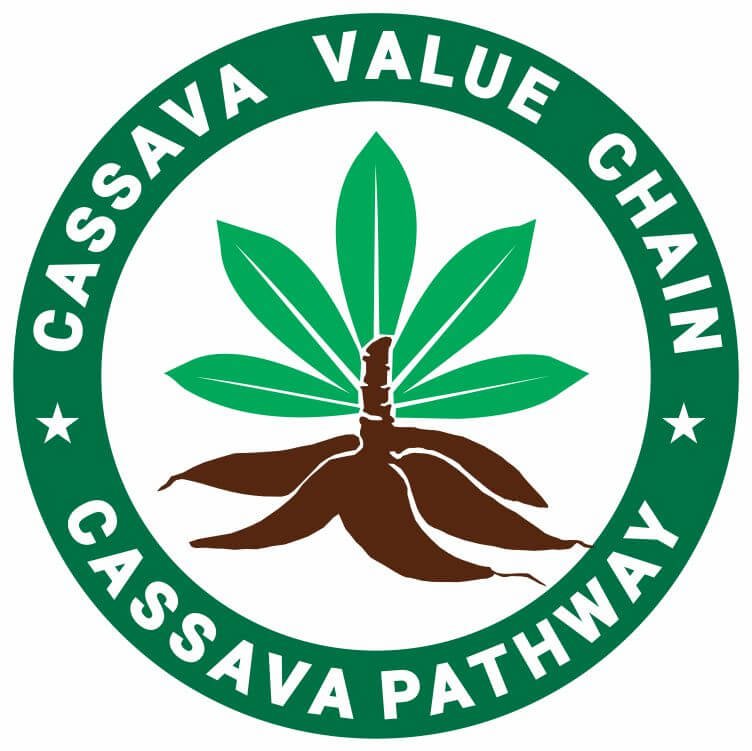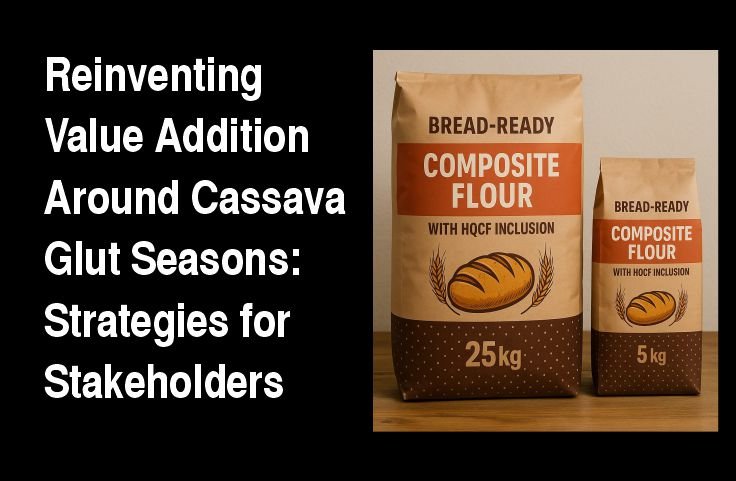Cassava gluts hurt farmers and processors. This guide shows why traditional value addition fails and how innovation, agility, and efficiency can drive real change.
Introduction: The Seasonal Challenge of Cassava Surpluses
Cassava remains one of Nigeria’s most important staple crops, supporting millions of farmers and serving as a raw material for a wide range of agro-industrial products.
However, during periods of glut, when supply far outweighs uptake, both cassava farmers and processors face immense financial strain.
These downturns in the market, often marked by severely depressed prices, expose the vulnerabilities in Nigeria’s cassava value chain.
When such gluts occur, the traditional assumption is that value addition; processing cassava into derivatives such as garri, fufu, starch, or flour, can offer a pathway to profitability.
Unfortunately, this approach often fails to yield the expected results. As the market price for cassava tubers crashes, the prices for derivative products also tend to fall in tandem.
In fact, many times, the losses from processing can even outweigh those from selling the raw tubers, especially when production processes are inefficient or capital intensive.
This reality signals the need for a new way of thinking, a strategic reinvention of how we approach value addition during market downturns in the cassava sector.
Why Conventional Methods Fail
It is a common misconception that converting cassava into finished products automatically translates into better returns.
While this may be true under stable market conditions, it does not always hold during glut seasons.
For instance, if a farmer is already facing a loss due to a decline in raw cassava prices, converting those tubers into garri or starch may still not recover costs.
This is because the market prices for those products are often just as depressed.
More troubling is the potential for deeper financial loss when such value addition is attempted using outdated, labour-intensive, or energy inefficient processing methods.
The cost of inputs such as labour, water, firewood, fuel, and packaging may eat deep into the already slim profit margins.
In some cases, processors may even find themselves operating at a loss, despite adding value.
Therefore, it becomes clear that merely doing more of the same is not a sustainable survival strategy. A deeper shift in approach is urgently needed.
The Triple Pillars for Survival: Knowledge, Agility, and Efficiency
To thrive during market downturns, players in the cassava sector must anchor their operations on three critical pillars:
1. Comprehensive Understanding of the Business Environment
It is not enough to produce or process cassava. One must understand pricing trends, consumption patterns, government policies, and competing products in both local and international markets.
2. Business Model Agility
The ability to pivot, adapt, or redesign business models in response to market changes is key.
Operators must remain flexible, continually assessing their product mix, sales channels, and partnership strategies.
3. Operational Efficiency Through Technology
Embracing low-cost, energy-saving technologies can drastically reduce production costs and make products more competitive, even when prices are low.
Mechanized systems, solar drying, and modular processors can help unlock new efficiencies.
Exploring Secondary Value Addition
The time has come to look past primary value addition, such as simply processing cassava into food items, and begin to explore secondary value addition.
This involves taking processed derivatives and enhancing them further into specialized, higher value products that cater to specific industry needs or consumer demands.
For example:
Sorbitol Production: Extracted from cassava starch, sorbitol is a vital ingredient in pharmaceuticals, toothpaste, and cosmetics.
Composite Flour Blends: Combining high-quality cassava flour with wheat or other grains for bread production is gaining traction, especially with the rising cost of imported wheat.
Eco Friendly Products: The production of biodegradable industrial binders, soap premixes or paint fillers using cassava derivatives could open new green market segments.
These kinds of innovations not only help diversify the market but also protect stakeholders from the volatility of traditional product markets.
Unlocking Innovation Through Research and Partnerships
To bring these high-value products to life, structured and collaborative innovation is required.
It is not enough to have ideas; they must be tested, refined, and brought to scale through robust systems.
This includes:
Targeted Research and Development (R and D)
Focused studies are needed to optimize formulas, test shelf life, assess market feasibility, and fine-tune production protocols.
Technical Validation and Certification
Products must meet industry standards for safety, quality and performance. This ensures acceptance and trust in the market.
Market Activation Strategies
Viable go-to-market plans, including packaging, pricing, promotion, and distribution, must be put in place to attract both local and export buyers.
Such efforts must be led by a coalition of stakeholders, research institutions, private entrepreneurs, government support agencies, and technical consultants, working together to shorten the time between idea and implementation.
Empowering SMEs Who Are the Real Engines of Cassava Innovation
Small and medium-sized enterprises (SMEs) are often the most nimble and innovative actors in Nigeria’s cassava value chain. They are well-positioned to pilot and scale new products quickly.
However, they must be supported with:
Technical training in product development and quality control
Access to affordable financing and machinery
Linkages to markets and offtakers
Policy support and incentives that encourage innovation
When SMEs are empowered and integrated into new value chains, innovation is no longer confined to research papers or pilot projects; it becomes a reality with measurable impact on livelihoods and economic growth.
Conclusion: Charting a New Course in the Cassava Economy
The cassava sector in Nigeria stands at a crossroads. In a season of abundance, what should represent opportunity is often seen as a threat.
Gluts bring hardship, but they also bring a chance to think differently.
The future lies not in repeating old patterns, but in reimagining cassava value addition, one that prioritizes secondary processing, aligns with market needs, and unlocks non-traditional demand areas.
With the right mindset, collaboration and innovation, stakeholders can transform seasonal gluts into gateways of prosperity.
Written by: Kazeem Lamidi. Contact him on WhatsApp with the link below.

Chimeremeze Emeh is a writer and researcher passionate about Africa’s most transformative root crop—cassava. Through his work at cassavavaluechain.com, he explores the entire cassava industry, from cultivation and processing to its diverse applications in food, health, and industrial use.
He also writes for palmoilpalm.com, where he shares his extensive experience and deep-rooted knowledge of palm oil, covering red palm oil, palm kernel oil, and refined products. His work there reflects his lifelong connection to agriculture and his commitment to promoting sustainable value chains in Africa.
Driven by curiosity and purpose, Chimeremeze aims to shed light on how cassava continues to empower communities, strengthen food systems, and link traditional farming wisdom with modern innovation.

